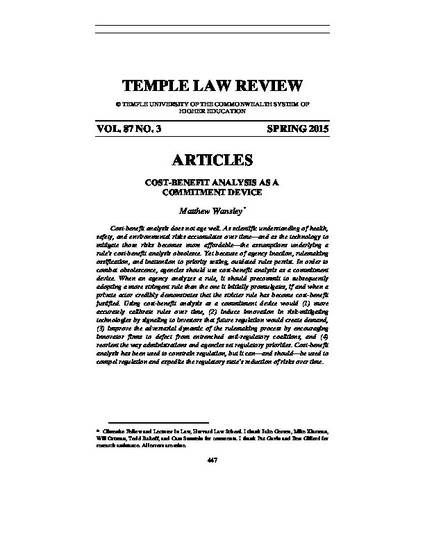
Cost-benefit analysis does not age well. As scientific understanding of health, safety, and environmental risks accumulates over time — and as the technology to mitigate those risks becomes more affordable — the assumptions underlying a rule’s cost-benefit analysis obsolesce. Yet because of agency inaction, rulemaking ossification, and inattention to priority setting, outdated rules persist. In order to combat obsolescence, agencies should use cost-benefit analysis as a commitment device. When an agency analyzes a rule, it should precommit to subsequently adopting a more stringent rule than the one it initially promulgates, if and when a private actor credibly demonstrates that the stricter rule has become cost-benefit justified. Using cost-benefit analysis as a commitment device would (1) more accurately calibrate rules over time, (2) induce innovation in risk-mitigating technologies by signaling to investors that future regulation would create demand, (3) improve the adversarial dynamic of the rulemaking process by encouraging innovator firms to defect from entrenched anti-regulatory coalitions, and (4) reorient the way administrations and agencies set regulatory priorities. Cost-benefit analysis has been used to constrain regulation, but it can — and should — be used to compel regulation and expedite the regulatory state’s reduction of risks over time.
- agencies,
- administrative law,
- regulations,
- rulemaking
Available at: http://works.bepress.com/matthew-wansley/29/
